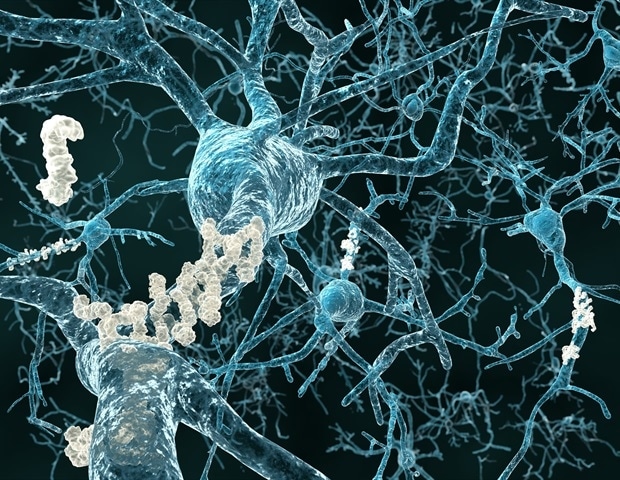Scientists at St. Jude Children’s Research Hospital have revealed the complex structures of two Parkinson’s disease-related proteins, both of which have been implicated in late-onset cases. Leucine-rich repeat kinase 2 (LRRK2) is a protein kinase that modifies other proteins in a process called phosphorylation; Rab29, a member of the Rab GTPase family that regulates cellular trafficking, regulates the activity of LRRK2. How Rab29 and LRRK2 work together to cause Parkinson’s disease remains unclear. St. Jude researchers have determined the structure of LRRK2 bound to Rab29, revealing the mystery behind LRRK2 regulation and providing implications for drug design.This work was published today in science.
Parkinson’s disease is the second most common neurodegenerative disease after Alzheimer’s disease, affecting 1-2% of the population over the age of 65. The genetic link to the disease is well known, with about 15% of cases having a family history. Although there are many genes associated with the disease, LRRK2 mutations are one of the most common causes. Due to its large size, structural studies of LRRK2 have been cumbersome.
“Studying this protein is extremely challenging,” said corresponding author Ji Sun, Ph.D., Department of Structural Biology at St. Jude.
Despite these difficulties, Sun and his team proposed the first structure of full-length LRRK2 in 2021 cell.
“In the first paper, we obtained the structure of LRRK2, but the structure showed an inactive conformation,” Sun explained. Proteins usually have active and inactive forms that are regulated by different cellular signals. Sometimes, binding to another protein is needed to trigger structural changes that transform the protein from an inactive to an active shape. “So, we started thinking, ‘We have a key state of LRRK2. Can we get its active conformation?'”
Cryo-electron microscopy captures the active state of LRRK2
Finding the active conformation is not as simple as adding Rab29 to LRRK2. LRRK2 can associate with other LRRK2 molecules through a process called oligomerization. This can convert a single LRRK2 monomer (one unit) into a dimer (two units) – or even larger assemblies. This means researchers must look for versions that represent the active form. Another problem is that Rab29 is located on the cell membrane.
“In cells, about 90 percent or more of LRRK2 is cytoplasmic,” Sun explained, referring to the cytoplasm, the fluid surrounded by cell membranes that contains many of the cell’s components. “A very small amount of the material sits on the membrane surface and forms large oligomers. These are the active and functional versions.”
The researchers, including first author Hanwen Zhu, Ph.D., of the Department of Structural Biology at St. Jude, used cryo-electron microscopy to determine the first structure of the Rab29-LRRK2 complex. This includes structures of monomers (one pair) and dimers (two pairs), but also unexpected tetramers (four pairs). “We are very excited about these structural findings because they represent the first high-resolution LRRK2 structures captured in the active state,” said Zhu.
In this tetramer, we see the active conformation of LRRK2, but in the monomeric and dimeric complexes, LRRK2 is in an inactive conformation. “
Ji Sun, Ph.D., Department of Structural Biology, St. Jude
Understanding the Rab29-LRRK2 complex
These findings indicate that LRRK2 activation depends not only on the proteins with which it interacts but also on their spatial arrangement within the cell.
“We propose a transition from a monomer to a tetramer upon membrane recruitment,” Sun explains. “Inside the cell, LRRK2 is predominantly an inactive monomer or dimer. But when Rab29 recruits LRRK2 to the cell membrane, the local concentration of LRRK2 increases. This promotes a transition to a tetramer, in which LRRK2 becomes active.”
What impact does it have on Parkinson’s disease? The structures provide researchers with an atomic-scale map to track how different mutations that cause Parkinson’s disease affect the function of the complex.
“All of these mutations actually favor the active conformation, meaning they provide new interactions in the active conformation or disrupt interactions in the inactive conformation,” Sun said. “The effect of the mutation can be perfectly visualized in our structure; it is well explained.”
The importance of such structural studies lies not only in the insights gained but also in their potential applications in drug design. For example, the researchers also captured the structure of LRRK2 in the presence of the drug DNL201. The drug had already passed phase 1 clinical trials to lock the protein in its active state, so it was used to validate their finding that the tetramer was indeed the active form of the complex.
“We now have an inactive conformation and an active conformation, so we can monitor the transition from the inactive state to the active state,” Sun explains. “These structures provide much-needed insights for medicinal chemists to design novel inhibitors targeting LRRK2 to treat Parkinson’s disease.”
Authors and funding
The study’s other first author is Francesca Tonelli of the University of Dundee. Other authors include Martin Turk, St. Jude and Dario Alessi of the University of Dundee.
The study was supported by the National Institutes of Health (R00HL143037 and R01NS129795), the UK Medical Research Council (MC_UU_00018/1), the Science Coordinating Area in Parkinson’s disease (ASAP) (ASAP-000463) through the Michael Fox Parkinson’s Disease Foundation Research Grant (MJFF) and ALSAC (St. Jude’s fundraising and advocacy organization).
source:
St. Jude Children’s Research Hospital
Journal reference:
Zhu H., et al. (2023) Rab29-dependent asymmetric activation of leucine-rich repeat kinase 2. science. doi.org/10.1126/science.adi9926.
#Jude #researchers #reveal #structure #Parkinsons #diseaserelated #protein
Image Source : www.news-medical.net
